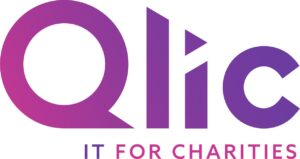Protecting sensitive data is more important than ever, especially for nonprofits that manage a wealth of valuable information. The threat landscape is constantly evolving, with cyberattacks becoming more sophisticated and frequent. However, it’s not just external threats that nonprofits need to be alarmed about—internal factors such as accidental deletions or misconfigurations can also lead to significant data loss. There are some common misconceptions surrounding cloud data storage solutions like Microsoft 365 for charities, which can lead to a false sense of security.
In this blog, we will explore the changing landscape of threats and the various causes of data loss. We’ll address the misconceptions surrounding cloud data storage and, most importantly, provide actionable insights on how nonprofits can protect themselves from these risks. By understanding these factors, nonprofits can better safeguard their data and ensure the continued success of their missions.
Understanding the Data Loss Threat Landscape
Nonprofits face an ever-evolving array of cybersecurity threats that make data protection more critical than ever. As these organisations progressively rely on cloud solutions, the importance of safeguarding sensitive information becomes vital. Cybercriminals have become skilled at exploiting technological advancements, turning the very tools designed to enhance operational efficiency into potential vulnerabilities. This dual nature of technology is particularly for charities using cloud computing solutions like Microsoft 365, which, due to their widespread adoption, have become a key target in the latest cybersecurity trends.
However, it’s essential to recognise that data loss isn’t always the result of external cyberattacks. In fact, a significant portion of data loss incidents stem from internal factors. As discussed in our recent webinar, “Safeguarding Your Charity’s Mission: How to Prevent Microsoft Data Loss Vulnerabilities With Datto,” only 13% of data loss is due to hackers and viruses, while 7% results from malicious insider deletion. Astonishingly, 47% of data loss occurs due to accidental deletion by individuals within the organisation.
This stark reality underscores the critical need for comprehensive data loss prevention (DLP) strategies for nonprofits.
The Importance of Nonprofit Data Loss Prevention
Data loss prevention is critical for nonprofits, not just for information protection but also for ensuring the overall health and sustainability of the organisation. Understanding its significance is key:
Protecting Sensitive Information
Nonprofits often handle large volumes of sensitive information, including donor details, beneficiary data, and financial data and records. Ensuring this data remains secure is paramount to protecting the privacy of individuals and maintaining the integrity of the organisation.
Compliance with Regulations
Nonprofits must follow various legal and regulatory requirements regarding data security and compliance. Failure to comply can result in hefty fines and legal penalties. Implementing vigorous data loss prevention measures ensures that your organisation remains compliant with regulations like GDPR, safeguarding both your data and your legal standing.
Maintaining Trust and Reputation
Trust is the foundation of any nonprofit organisation. Donors, beneficiaries, and stakeholders expect that their information will be handled with the utmost care. A data breach or loss can brutally damage your reputation, leading to a loss of confidence and support from the community. Effective data loss prevention helps maintain the trust you’ve built over time.
Preventing Financial Loss
Data loss can have considerable financial implications for nonprofits. Beyond the immediate costs associated with recovering lost data, a breach can lead to a loss in donations, loss of funding, and even legal expenses. By preventing data loss, nonprofits can protect their financial resources and ensure that funds are directed toward their mission, not damage control.
Enhancing Operational Efficiency
Data loss can disrupt daily operations, leading to delays and inefficiencies. Implementing data loss prevention strategies ensures that your organisation’s operations run smoothly without interruptions caused by missing or corrupted data. This allows your team to focus on their central mission without the distraction of data recovery efforts.
Safeguarding Intellectual Property
Nonprofits often develop unique programs, research, and strategies that are considered intellectual property. Protecting this information from unauthorised access or loss is crucial for maintaining a competitive edge and continuing to innovate in your field.
Mitigating Insider Threats
Insider threats, whether malicious or accidental, pose a significant risk to data security. As mentioned earlier, a considerable percentage of data loss incidents occur due to internal mishaps. By implementing robust data loss prevention measures, nonprofits can mitigate the risks associated with insider threats, ensuring that data remains protected from all angles.
Nonprofit data loss prevention is not just about protecting information; it’s about preserving the very foundation of the organisation. From maintaining trust and reputation to ensuring compliance and operational efficiency, data loss prevention is an important strategy for safeguarding the future of your nonprofit.

Cloud Data Security Misconceptions and Realities
When it comes to Microsoft Data Protection, and many other cloud-based solutions, there are numerous misconceptions that nonprofits must be aware of to effectively protect their data. Believing these misconceptions can lead to serious vulnerabilities and, ultimately, data loss. Let’s explore some of the most common misconceptions and the realities behind them.
- Cloud Data is Infallible
- Cloud Providers Handle All Security
- Built-in Cloud Security is Sufficient
- Cloud Data is Automatically Backed Up
Cloud Data is Infallible
Misconception: Data stored in the cloud is completely safe and cannot be compromised.
Reality: While the cloud offers robust security measures, it is not infallible. Just like any other data storage solution, cloud data is susceptible to threats such as cyberattacks, accidental deletion, and internal breaches. Nonprofits must remain vigilant and implement additional layers of security to protect their data effectively.
Cloud Providers Handle All Security
Misconception: Cloud service providers like Microsoft are responsible for all aspects of data security.
Reality: Cloud providers follow a shared responsibility model, meaning that while they manage the security of the cloud infrastructure, the responsibility for securing the data stored in the cloud largely falls on the organisation. This includes setting up user access controls, managing encryption, and ensuring data backups are in place. Understanding this shared responsibility is crucial for nonprofits to avoid vulnerabilities and ensure comprehensive data protection.
Built-in Cloud Security is Sufficient
Misconception: The built-in security features provided by cloud services are enough to fully protect your data.
Reality: While cloud providers offer a range of built-in security features, they are often not sufficient to cover all potential threats. Organisations must implement additional security measures, such as multi-factor authentication, regular data backups, and third-party security tools, to create a more robust security posture.
Cloud Data is Automatically Backed Up
Misconception: Data stored in the cloud is automatically backed up, so there’s no need to worry about data loss.
Reality: Although cloud providers like Microsoft offer some level of redundancy, automatic backups are not always guaranteed or comprehensive. It is fundamental for nonprofits to establish their own backup strategies, ensuring that critical data is regularly backed up and easily recoverable in case of data loss or corruption.
Addressing These Cloud Data Loss Misconceptions
Key steps should be taken to effectively address the misconceptions surrounding cloud data loss and ensure that your nonprofit is adequately protected. These steps will help reduce the risk of data loss in Microsoft 365 and other cloud solutions, providing a stronger foundation for your organisation’s data security.
- Understanding of Microsoft’s Shared Responsibility Model
- Proactive Security Measures
- Third-Party Backup Solutions
Understanding Microsoft’s Shared Responsibility Model
One of the most critical steps is understanding Microsoft’s Shared Responsibility Model. While Microsoft provides robust security for its cloud infrastructure, the responsibility for protecting the data stored within that cloud largely falls on the user. Nonprofits must recognise their role in this shared framework. As explored in our recent webinar with Datto, standard Microsoft Cloud Solutions do not protect you from all forms of data loss, making it essential to take proactive measures to safeguard your information. Learn more about how Microsoft 365 backs up data with our guide.
Proactive Security Measures
In addition to understanding your responsibilities, implementing proactive security measures is crucial. This includes regular data backups, employee training on data security best practices, and constant monitoring for vulnerabilities within your systems. These steps are vital to creating a comprehensive security strategy that mitigates risks and reduces the likelihood of data loss.
Third-Party Backup Solutions
Relying solely on Microsoft’s built-in backup capabilities can leave your nonprofit vulnerable to data loss. Adopting the 3-2-1 backup rule, which recommends having three copies of your data, stored on two different media, with one off-site, is a best practice for data protection. Integrating Microsoft 365 with third-party backup services ensures that your data can be recovered beyond the default retention period. As discussed in our webinar, Microsoft recommends that organisations implement such measures. Consider using Microsoft’s own Data Loss Prevention tools available with Microsoft Purview or third-party solutions like Datto to enhance your data protection strategy.

The Role of Microsoft Data Loss Prevention in Protecting Nonprofit Data
Microsoft Data Loss Prevention (DLP) is a critical tool within Microsoft Purview, designed to help organisations identify, monitor, and protect sensitive information. Using DLP and additional purview capabilities can help your nonprofit better protect its data.
By implementing these measures, your nonprofit can enhance its data security and improve its ability to safeguard sensitive information.
Key Features of Microsoft Data Loss Prevention include:
- Content Discovery and Classification: Helps to identify and classify sensitive information across your organisation’s data, ensuring that it is appropriately protected.
- Policy Enforcement: Automatically enforce rules that prevent unauthorised sharing or transmission of sensitive data, reducing the risk of accidental exposure.
- Real-Time Alerts and Notifications: Real-time alerts and notifications to administrators when sensitive data is at risk, allowing for immediate action.
- Data Monitoring and Reporting: Ongoing monitoring and detailed reporting help organisations keep track of their data security posture, identifying potential vulnerabilities before they become critical.
- Integration with Other Security Tools: DLP integrates seamlessly with other Microsoft security tools, providing a comprehensive approach to data protection.
How Microsoft 365 Integrates Data Loss Protection Tools to Protect Nonprofit Data
Microsoft 365 integrates Data Loss Prevention tools across its suite of applications, including Outlook, SharePoint, OneDrive, and Teams. These tools provide a layered approach to data protection, ensuring that sensitive information is safeguarded throughout its lifecycle.
Email Protection
Within Outlook, DLP helps prevent unauthorised sharing of sensitive information via email. Policies can be configured to detect and block emails containing confidential data, ensuring that such information does not leave the organisation without proper authorisation.
File Sharing Protection
In SharePoint and OneDrive, DLP policies help prevent unauthorised access to and sharing of sensitive files. These tools allow administrators to enforce strict sharing permissions and monitor file activity to ensure data security.
Collaboration Protection
Microsoft Teams integrates DLP to protect sensitive information shared during conversations, meetings, and file exchanges. This ensures that even in collaborative environments, your nonprofit organisation’s data remains secure. This level of data protection is one of the key benefits of using Microsoft Teams for nonprofits.
Unified Policy Management
Administrators can create and manage DLP policies from a centralised location within the Microsoft 365 Compliance Centre. This unified approach allows for consistent enforcement of security policies across all Microsoft 365 applications, providing a streamlined way to manage data protection.
Benefits of Using Microsoft Data Loss Prevention
DLP implementation within Microsoft’s ecosystem offers numerous benefits for nonprofit organisations, including:
- Enhanced Data Security
- Regulatory Compliance
- Operational Efficiency
- Cost-Effective Solution
Enhanced Data Security
DLP tools provide robust protection for sensitive information, ensuring that data is not lost or exposed due to unauthorised access or accidental sharing.
Regulatory Compliance
By implementing DLP, nonprofits can more easily meet regulatory requirements for data protection, reducing the risk of fines and legal penalties.
Operational Efficiency
DLP automates many aspects of data protection, allowing organisations to focus on their core mission without being bogged down by manual security processes.
Cost-Effective Solution
DLP within Microsoft 365 offers a cost-effective way to enhance your organisation’s data security without the need for costly third-party solutions. By leveraging tools already available within the Microsoft ecosystem, nonprofits can achieve comprehensive data protection with minimal additional investment.
Understanding and addressing the misconceptions around cloud data loss is essential for nonprofits. By implementing robust DLP strategies within Microsoft 365, organisations can ensure that their data is secure, compliant, and efficiently managed, allowing them to focus on their mission with confidence.
Closing Thoughts
In this blog, we’ve explored the critical importance of Microsoft data loss prevention for nonprofits, specifically when using cloud solutions such as Microsoft 365. We’ve clarified common misconceptions about cloud security and emphasised the importance of implementing additional data loss protection measures.
From understanding Microsoft’s Shared Responsibility Model to integrating third-party backup solutions, taking these proactive steps is essential to safeguard your nonprofit organisation’s sensitive information, maintain compliance, and ensure operational efficiency.
Get in Touch
Would your charity like to learn more about data loss prevention within Microsoft and beyond? Book your FREE consultation with our IT experts at Qlic by clicking the button below.






